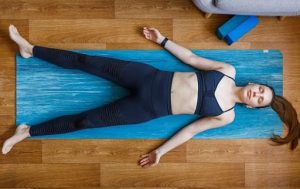 Although meditation is an ancient tradition, it is still practiced in civilizations worldwide to create a sense of quiet, ease, inner harmony, inner peace, and happiness that we can generate for ourselves.
Although meditation is an ancient tradition, it is still practiced in civilizations worldwide to create a sense of quiet, ease, inner harmony, inner peace, and happiness that we can generate for ourselves.
Meditation is a method of training the mind, similar to how fitness trains the body. While meditation has ties to various religious beliefs, it is more about transforming consciousness, finding awareness, and gaining peace than it is about faith. Although there are several meditation techniques, the nine listed here are the most common.
- Meditation on mindfulness
- Meditation on the spiritual
- Meditation that is centered
- Meditation via movement
- Meditation with mantras
- Meditation on the transcendent
- Progressive unwinding
- Meditation on loving-kindness
- Meditation visualization
How to Meditate: A Beginner’s Guide to Meditation
This meditation activity is a great way to get started with meditation.
- First, kneel or sit with your legs to one side or in any other comfortable position. You might want to consider purchasing a meditation chair or mat.
- Taking a half-lotus position crossed legged with your right leg over the left, your back upright and spine straight.
- Rest your hand’s palms up on your lap with the tip of your right index finger contacting your left thumb once you’ve found a comfortable position. Find a more relaxed posture if this one is too unpleasant, but don’t sit in a forceful or unnatural position.
- Make sure you’re not slouching.
- Close your eyes gently as if you’re about to fall asleep. Make sure there is no tension across your brows by not closing your eyes, and you may also use eye masks.
- Do not attempt to control your breathing; just let it happen naturally.
- Think of the nice things you’ve done in the past, present, and plans for the future until you have joy and contentment. Now it’s time to start meditation.
- Begin by relaxing the muscles in your face, then the muscles in your neck, shoulders, arms, chest, torso, and legs.
- There should be no stress across your shoulders or on your forehead.
- Concentrate on the task at hand while allowing your thoughts to relax. Feel as if your body and mind are entering into an ultimate state of serenity and ease.
- Start with meditating for two to three minutes, and then attempt it for longer lengths of time, up to twenty minutes, twice a day.
Meditation’s Benefits
 You can improve your work performance by meditating every day! Meditation will improve your focus and concentration, as well as your capacity to multitask, according to research. Meditation helps clear the brains and focus on the present moment, resulting in a significant increase in productivity. It also reduces the likelihood of depression.
You can improve your work performance by meditating every day! Meditation will improve your focus and concentration, as well as your capacity to multitask, according to research. Meditation helps clear the brains and focus on the present moment, resulting in a significant increase in productivity. It also reduces the likelihood of depression.
Short-term nervous system benefits of meditation includes:
- More sensations of happiness
- Reduces stress
- More intense relaxation
- Lessen psychological discomfort
- Emotional well-being
- Improved mental capacities
- Better physical well-being
- Reduce your blood pressure
- Blood circulation is improved
- Reduced heart rate
- Reduces anxiety
To liberate the mind from being constantly bogged down by the things it cannot control, like external situations or powerful internal emotions, spend time meditating to ensure that a quiet mind and a sense of inner peace remains.

Recent Comments